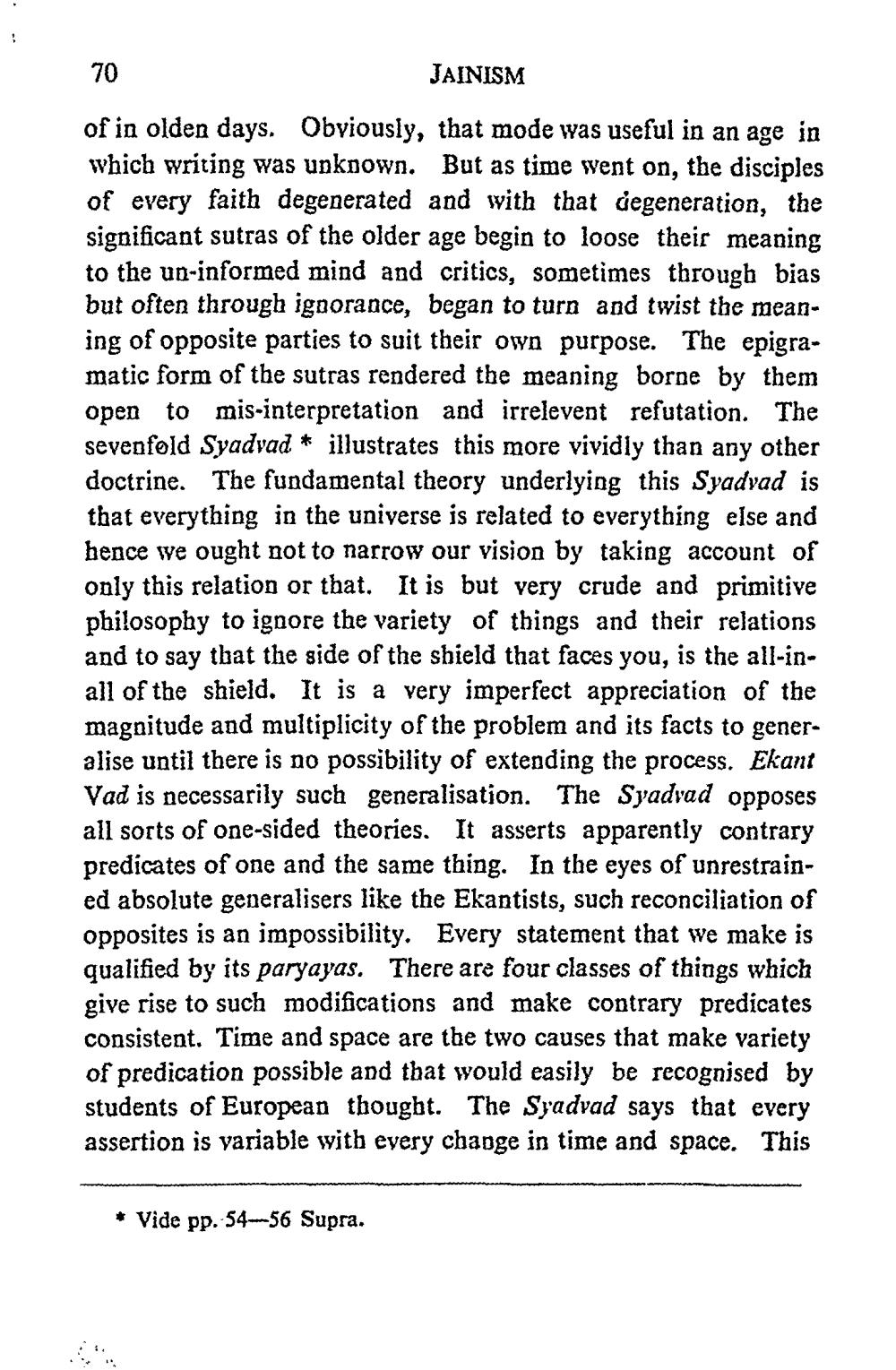________________
70
JAINISM
of in olden days. Obviously, that mode was useful in an age in which writing was unknown. But as time went on, the disciples of every faith degenerated and with that degeneration, the significant sutras of the older age begin to loose their meaning to the up-informed mind and critics, sometimes through bias but often through ignorance, began to turn and twist the meaning of opposite parties to suit their own purpose. The epigramatic form of the sutras rendered the meaning borne by them open to mis-interpretation and irrelevent refutation. The sevenfold Syadvad * illustrates this more vividly than any other doctrine. The fundamental theory underlying this Syadvad is that everything in the universe is related to everything else and hence we ought not to narrow our vision by taking account of only this relation or that. It is but very crude and primitive philosophy to ignore the variety of things and their relations and to say that the side of the shield that faces you, is the all-inall of the shield. It is a very imperfect appreciation of the magnitude and multiplicity of the problem and its facts to generalise until there is no possibility of extending the process. Ekant Vad is necessarily such generalisation. The Syadvad opposes all sorts of one-sided theories. It asserts apparently contrary predicates of one and the same thing. In the eyes of unrestrained absolute generalisers like the Ekantists, such reconciliation of opposites is an impossibility. Every statement that we make is qualified by its paryayas. There are four classes of things which give rise to such modifications and make contrary predicates consistent. Time and space are the two causes that make variety of predication possible and that would easily be recognised by students of European thought. The Syadvad says that every assertion is variable with every change in time and space. This
* Vide pp. 54-56 Supra.




